Andrew White ( 1829 - 1900 ), born in Stretton-on-Dunsmore, Warwickshire, England, Andrew emigrated to australia in 1853 aboard the James L. Bogert. By 1856, he had established himself as a significant grazier and civic leader in the Geelong and Torquay region. In 1863, he purchased 1,400 acres originally held by squatter Elias harding. Then in 1865, he added 2,000 acres from squatter Robert Zealley and 1,000 acres from the crown. Then in 1886 Andrew acquired several large allotments in the township of Puebla (Torquay). He acquired extensive tracts of land in the Shires of South Barwon and Barrabool. His holdings totaled approximately 11,095 acres by 1980, stretching from Mount Duneed to Torquay and extended across East to Barwon Heads.
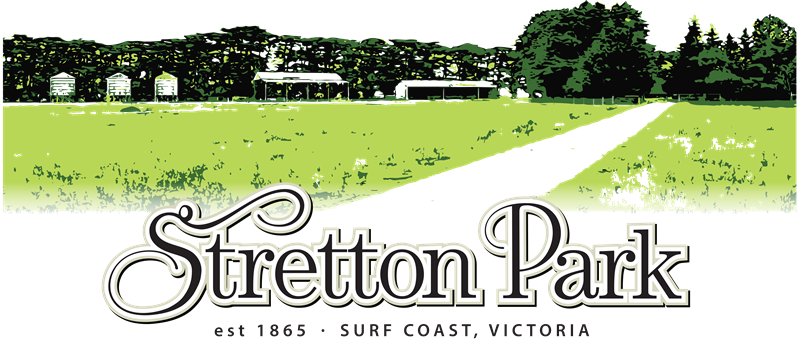
History & Heritage.
See the history and an the account of the heritage of 'Stretton Park' by author Cheryl Baulch, for the 'Torquay Museum without Walls', Quarterly Magazine 2021, Vol 6, No.2, Issue 022. Support content and information provided by the Turner family, Nerida Turner.
See press: 'Andrew White & Stretton Park' - History Matters mag.Creation of the iconic Stretton Park.
A significant farm & agricultural hub.
The land and farm today known as "Stretton park" formed a core part of Andrew Whites estate, encompassing over 9,000 acres from mount Duneed to torquay, it served as the centre hub for his agricultural operations. The name "Stretton" reflects Andrew White's birthplace in England.
STRETTON PARK TODAY
A landmark rural property
Stretton Park presents itself proudly to the passing world — 15,000 vehicles, 30,000 travellers use the Surf Coast Highway, each day — with its iconic three silos and classic rural sheds, framed by sheltering tree plantations and glowing evening skies. It’s a timeless vista along the Surf Coast Highway, where countryside character meets the rhythm of modern life.
As the afternoon light softens across the front paddocks and the working day draws to a close, a quiet calm seems to settle over the land. Those who pass through the farm’s front gates often sense an immediate change — the scent of green grass, the freshness of country air, the sounds of birds and gentle movement of livestock. It’s a welcome transition — a step away from the pace of Torquay, Geelong, or Melbourne — and into the peaceful pastures of Stretton Park.
As the afternoon light softens across the front paddocks and the working day draws to a close, a quiet calm seems to settle over the land. Those who pass through the farm’s front gates often sense an immediate change — the scent of green grass, the freshness of country air, the sounds of birds and gentle movement of livestock. It’s a welcome transition — a step away from the pace of Torquay, Geelong, or Melbourne — and into the peaceful pastures of Stretton Park.
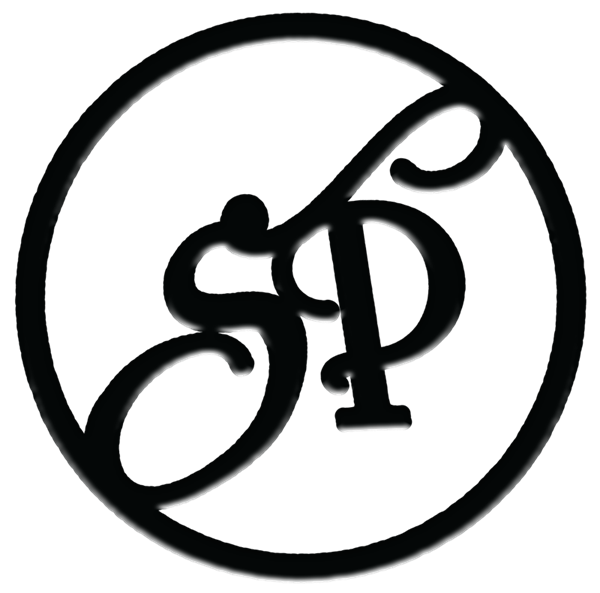
Angus Cattle
Under the Turner family’s care, Stretton Park entered a new chapter with a growing focus on cattle. Responding to strong demand in the meat industry, the farm transitioned much of its operation to support a thriving herd. For nearly two decades, Black Angus cattle have been bred across the property, chosen for their strength, adaptability and the premium quality they bring to market. This shift not only reflected changes within the broader industry but also carried forward the farm’s tradition of working with the land to produce livestock of enduring value.
Merino Sheep
Sheep have quietly remained a part of Stretton Park’s landscape in recent years, grazing in smaller paddocks and around the woolshed. While the farm has shifted its focus to cattle, sheep continue to play a role - providing wool, maintaining the grasses in the smaller yards, and preserving a link to the farm’s traditional practices. Their presence serves as a gentle reminder of Stretton Park’s layered history, blending both heritage and the ongoing life of the property.
WOOL EXPERTISEHISTORY IN DATES
Our Timeline
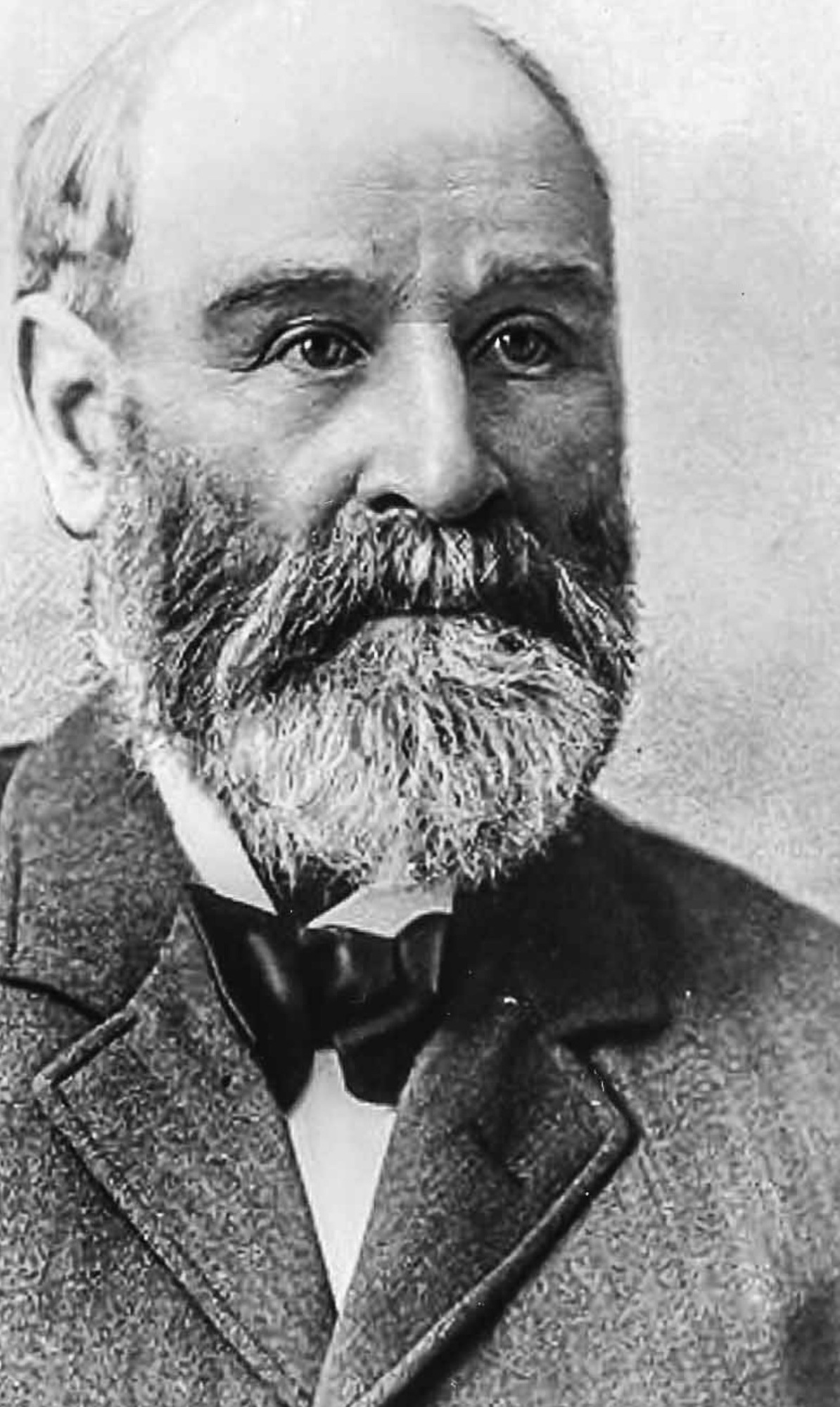
Andrew White
(c. 1860s–1900)
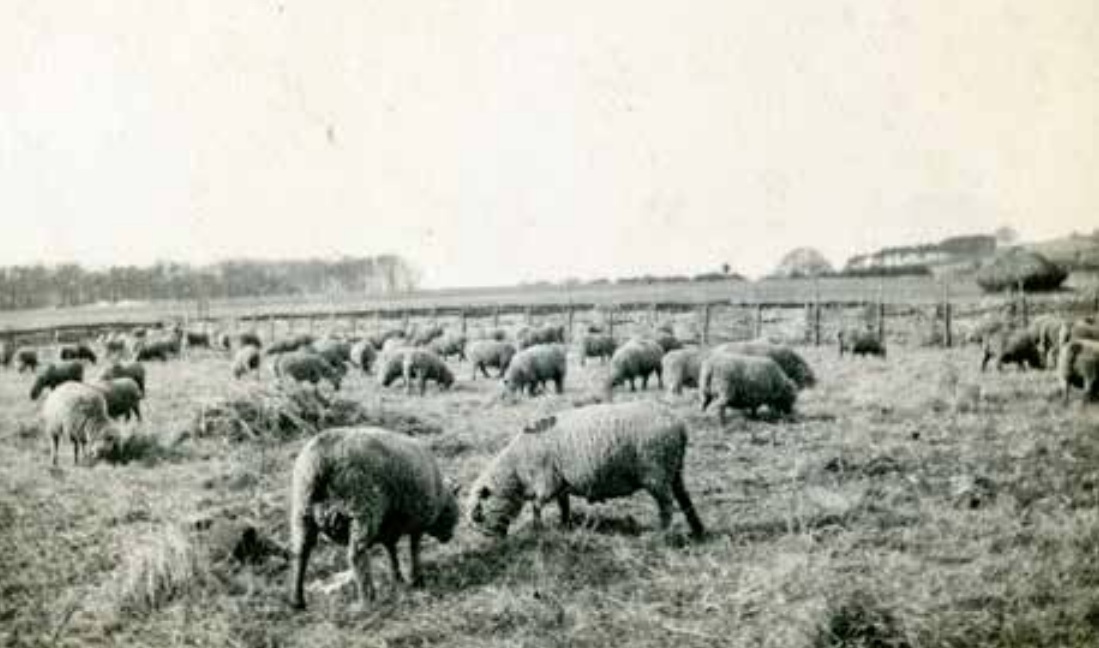
Stretton Park Sheep
year : 1860's
Andrew White founded Stretton Park in the 1860s in Victoria Australia. Born in 1829 in Stretton-on-Dunsmore, Warwickshire, England, Andrew sailed to Port Phillip aboard the James L. Bogert in 1853, arriving amid the gold rush’s feverish promise. By 1856, White had pivoted from mining dreams to the enduring wealth of wool, acquiring prime allotments in the Shires of South Barwon and Barrabool. His vision crystallized in the 1860s when he established Stretton Park - named for his English birthplace - as a sprawling stud at Connewarre, near Torquay. Here, on 11,095 acres by 1880, White’s superfine merinos roamed freely, their fleeces yielding clips that graced Geelong’s auction floors with “sup extra” acclaim.
A civic pillar, White served on South Barwon Shire Council from 1864, championing roads and bridges that knit the district’s fabric. White’s innovations - selective breeding, corn-fed vitality—set benchmarks, with 1883 sales fetching 10d per pound for 15 bales of branded “over AW” (Andrew White) merino. His 1900 passing marked not an end, but a handover to son, leaving a wool empire that echoed England’s pastoral idylls in Australia’s sun-drenched south. Under White, Stretton Park wasn’t merely land; it was lineage, woven into the young nation’s fleece story.
A civic pillar, White served on South Barwon Shire Council from 1864, championing roads and bridges that knit the district’s fabric. White’s innovations - selective breeding, corn-fed vitality—set benchmarks, with 1883 sales fetching 10d per pound for 15 bales of branded “over AW” (Andrew White) merino. His 1900 passing marked not an end, but a handover to son, leaving a wool empire that echoed England’s pastoral idylls in Australia’s sun-drenched south. Under White, Stretton Park wasn’t merely land; it was lineage, woven into the young nation’s fleece story.
Gilbert White, Andrew’s son, stewarded Stretton Park through the dawn of a new century, inheriting it in 1900. Born into the wool’s rhythm around 1860, Gilbert inherited not just acres, but an ethos of excellence, assuming full reins upon his father’s 1900 departure. A South Barwon Shire president, Gilbert’s tenure until the 1930s upheld the farm’s finesse, with a grazier’s keen eye and councilor’s resolve, he expanded the merino flock. The 1903 estate auctions, though transitional, showcased his early prowess: 7 bales of first combing wool at 12d per pound, alongside 11 bales of first fleece, underscoring the land’s unyielding bounty.
Gilbert’s era bridged Edwardian grace and interwar grit, as global markets waxed and waned. He championed irrigation and pasture rotation, yielding fleeces of “blue corn fed” lustre that commanded premiums in Geelong’s storied sales. A devoted South Barwon shire member, Gilbert served multiple terms as president, fostering community ties. Gilbert’s tenure, ending around the 1930s, preserved Stretton as a prestigious sheep station. In his hands, Stretton Park evolved from raw beginnings to a more polished operation, its fibres threading Australia’s rural tapestry with quiet, enduring strength.
Gilbert’s era bridged Edwardian grace and interwar grit, as global markets waxed and waned. He championed irrigation and pasture rotation, yielding fleeces of “blue corn fed” lustre that commanded premiums in Geelong’s storied sales. A devoted South Barwon shire member, Gilbert served multiple terms as president, fostering community ties. Gilbert’s tenure, ending around the 1930s, preserved Stretton as a prestigious sheep station. In his hands, Stretton Park evolved from raw beginnings to a more polished operation, its fibres threading Australia’s rural tapestry with quiet, enduring strength.
year : 1900's
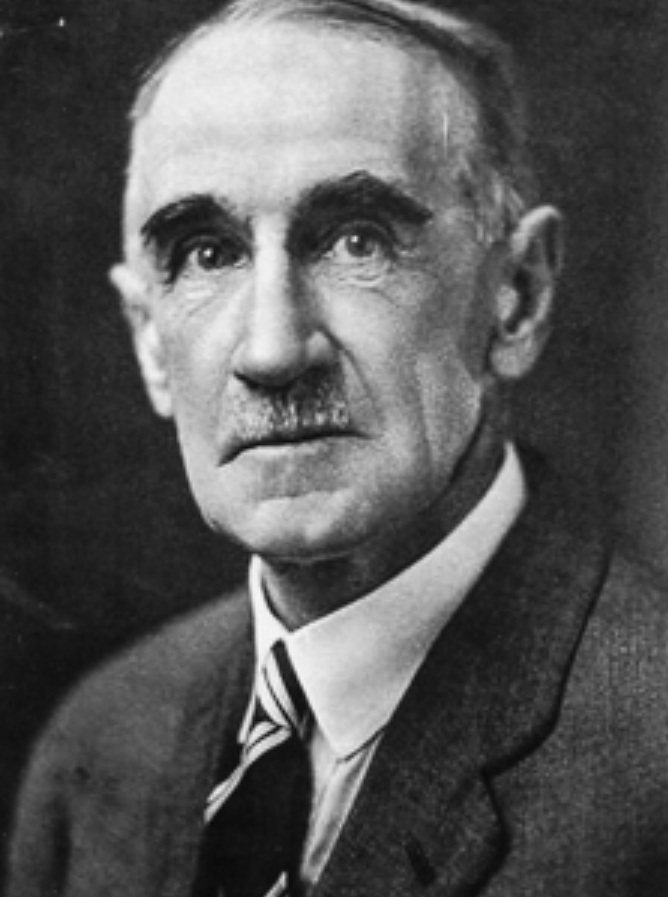
Gilbert White
(1900-c. 1930s)
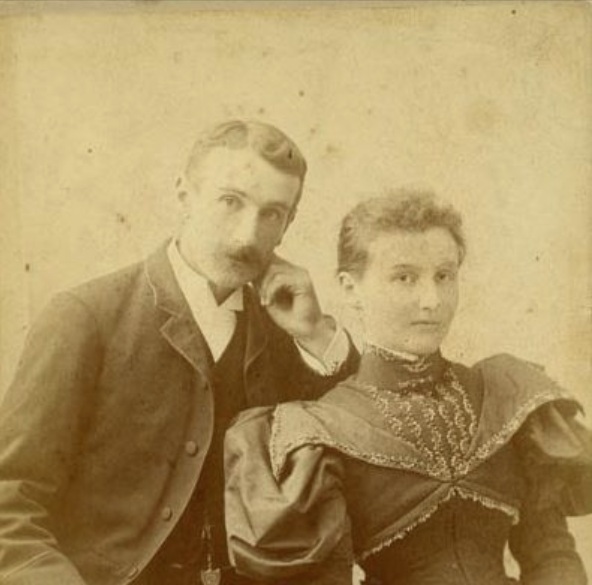
Alfred G White with wife Bessie
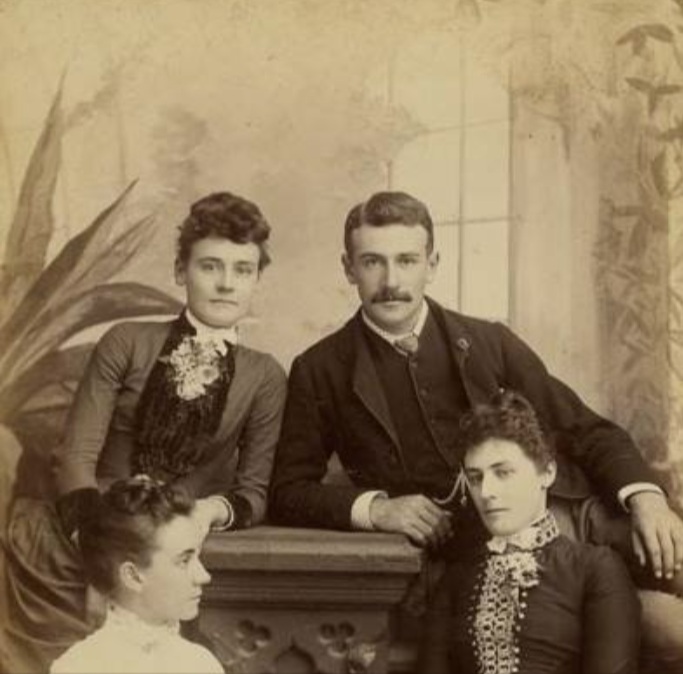
Alfred.G. White with his sisters, Laura, Adeline, and Henrietta

Ted Bevan
(c. 1930s–1950s)
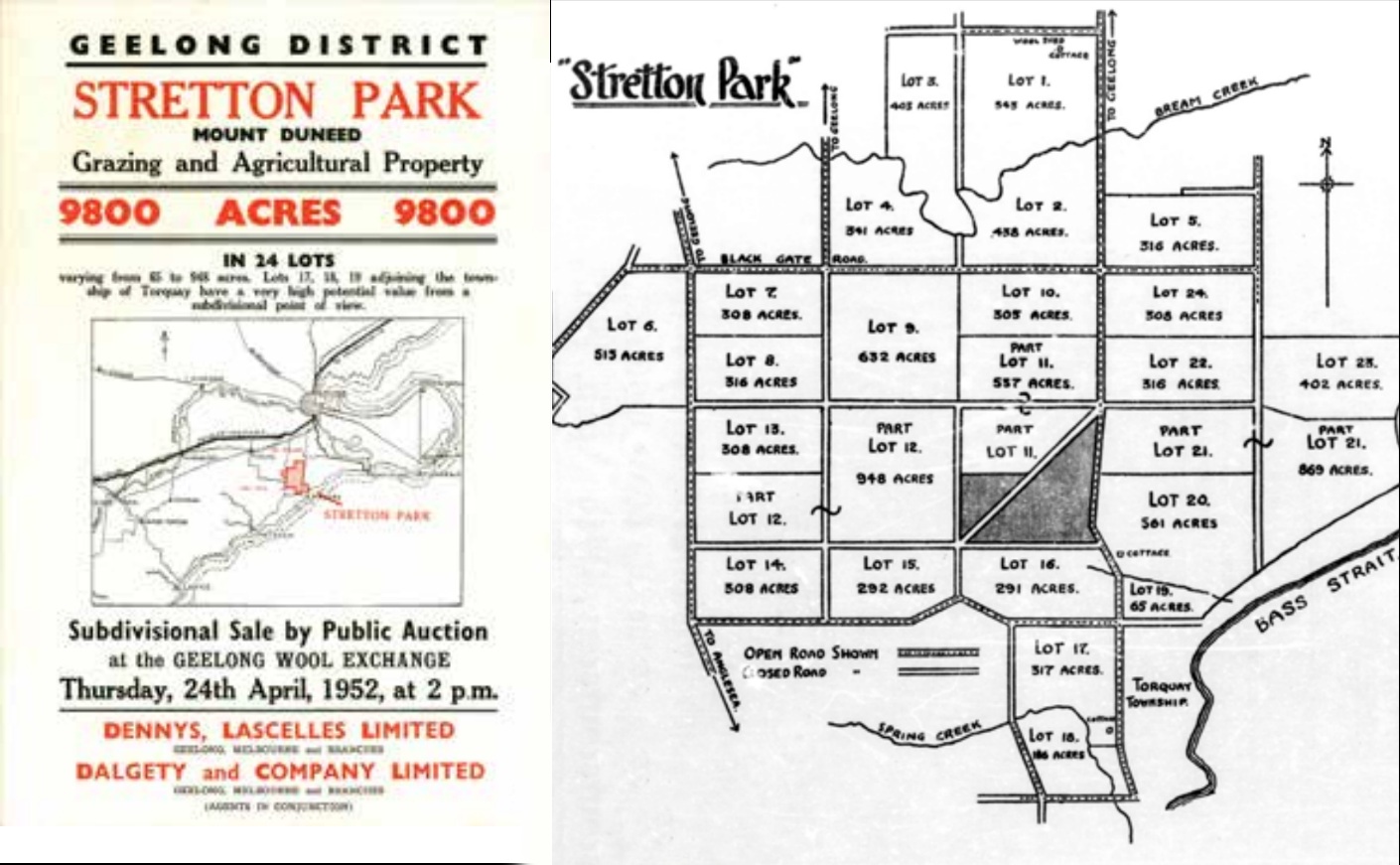
1952 large public auction - Stretton Park - 23 lots for sale
year : 1930's
Ted Bevan acquired Stretton Park in the 1930s, steering it through Depression and war. Precise dates elude dusty ledgers, but Bevan’s imprint blooms in 1930s appraisals: Mt. Duneed’s “STRETTON PARK A” clips hailed for their vitality undimmed by hardship. His “STRETTON PARK A” clips earned “sup extra” acclaim, with 1943 sales hitting 20” pence per pound, a catalogue peak, a record etched in auction lore. A fellmonger, Bevan refined processing and introduced hardy sires, maintaining 15 lb fleeces in Geelong auctions. Active in local ag committees, he bridged tradition and post-war growth. Under Bevan’s watch through the 1940s and 1950s, Stretton thrived as a merino haven, its pastures greening post-war booms. He introduced hardy sires, blending tradition with tactical feeds to sustain 15 lb averages, while Geelong sales buzzed with his branded bales. A man of the land’s pulse, Bevan navigated rationing and recovery, his flocks embodying Victoria’s pastoral rebirth. Civic echoes lingered; like predecessors, he bolstered local ag committees, weaving Stretton Park to community.
John Richardson, a descendant of H.F. Richardson, played a key role in linking Stretton Park with one of Victoria’s most respected livestock firms. Through his family’s long-standing involvement in the pastoral industry, he carried forward a tradition of quality stock management and trusted trading networks. His connection brought recognition to Stretton Park’s herds and strengthened its reputation within the broader Geelong and Western District grazing community.
John Richardson was a prominent and shrewd Geelong stockman, amplified the stud’s scope, he refined superfine clips that excelled in 1970s Australian Wool Network sales. Wool clips under his aegis, garnered acclaim at Australian Wool Network sales, their micron finesse fetching premiums. Community roots ran deep; he lent lands to fetes and football teams, embodying community spirit. Through oil shocks and periods of drought, Richardson’s resolve held. By 1981, Richardson’s stewardship had honed Stretton’s reputation, passing a polished farm to new hands.
John Richardson was a prominent and shrewd Geelong stockman, amplified the stud’s scope, he refined superfine clips that excelled in 1970s Australian Wool Network sales. Wool clips under his aegis, garnered acclaim at Australian Wool Network sales, their micron finesse fetching premiums. Community roots ran deep; he lent lands to fetes and football teams, embodying community spirit. Through oil shocks and periods of drought, Richardson’s resolve held. By 1981, Richardson’s stewardship had honed Stretton’s reputation, passing a polished farm to new hands.
year : 1960's
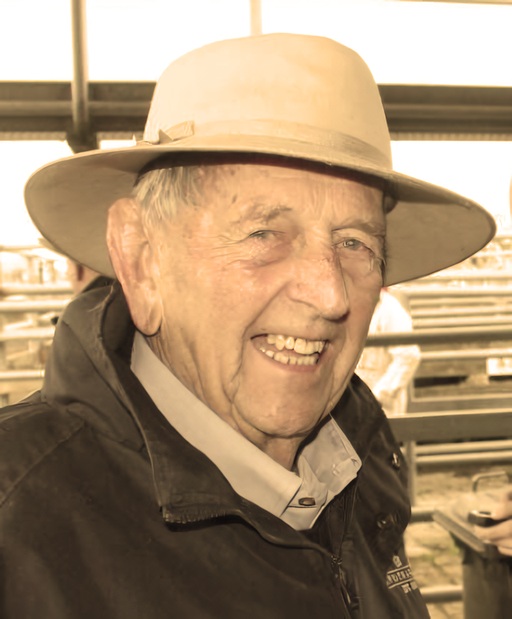
John Richardson - H.F. Richardson Livestock
(c. 1960s–1981)
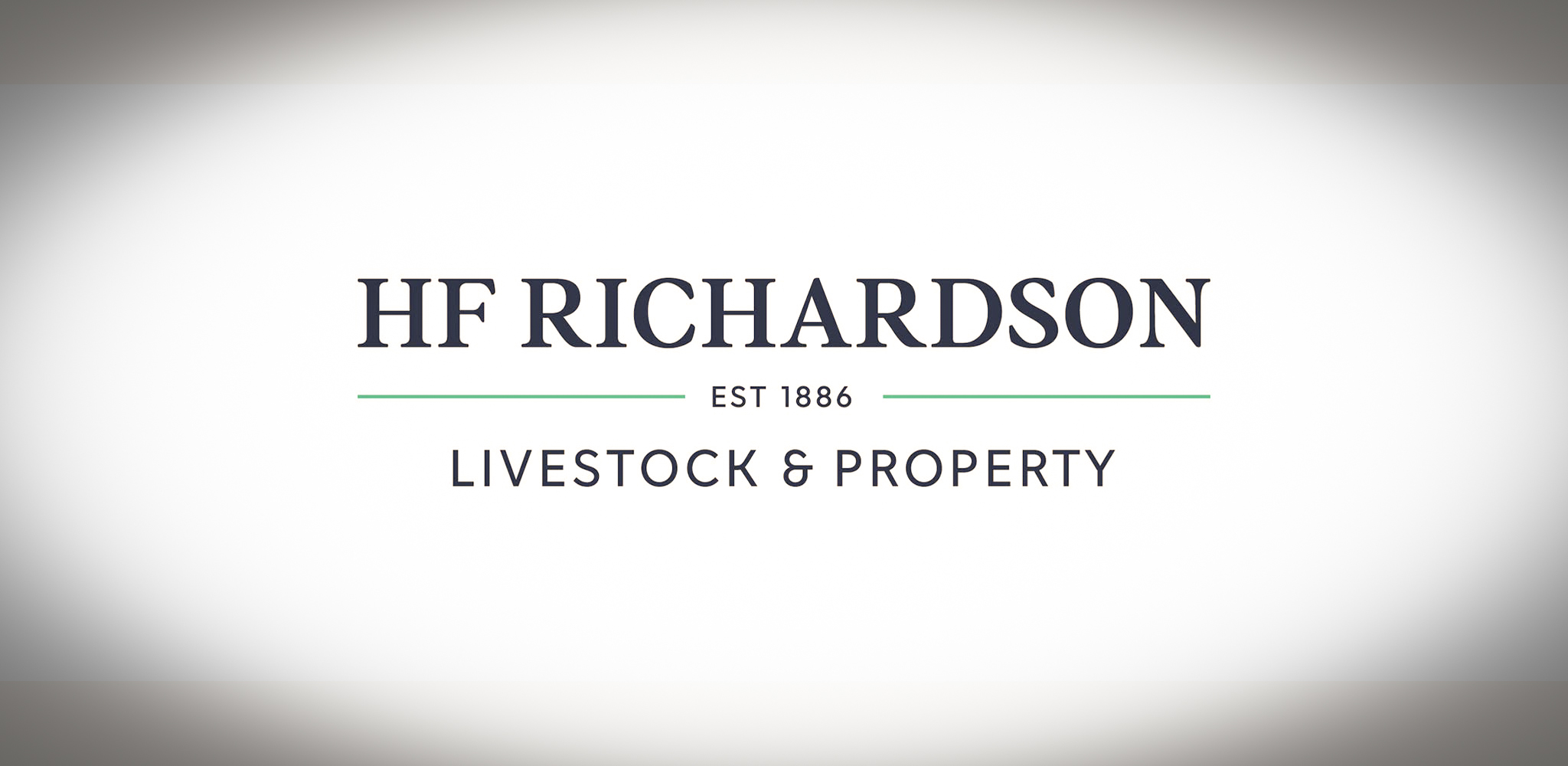
Trading as a family company since 1886, HF Richardson is one of Victoria's oldest privately owned livestock and property agency’s.
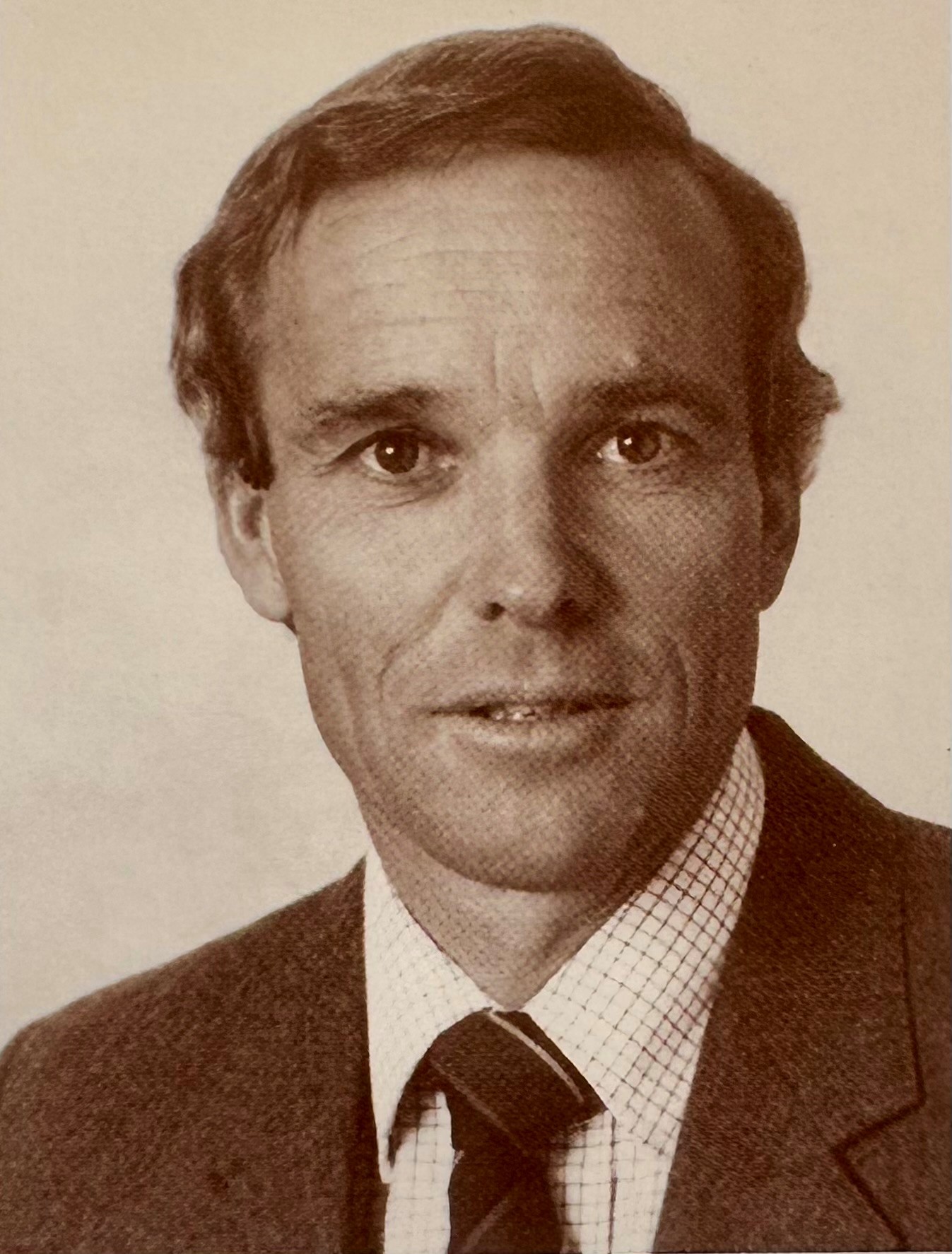
Graeme Milton Turner
- the Turner Family
(1982–Present)
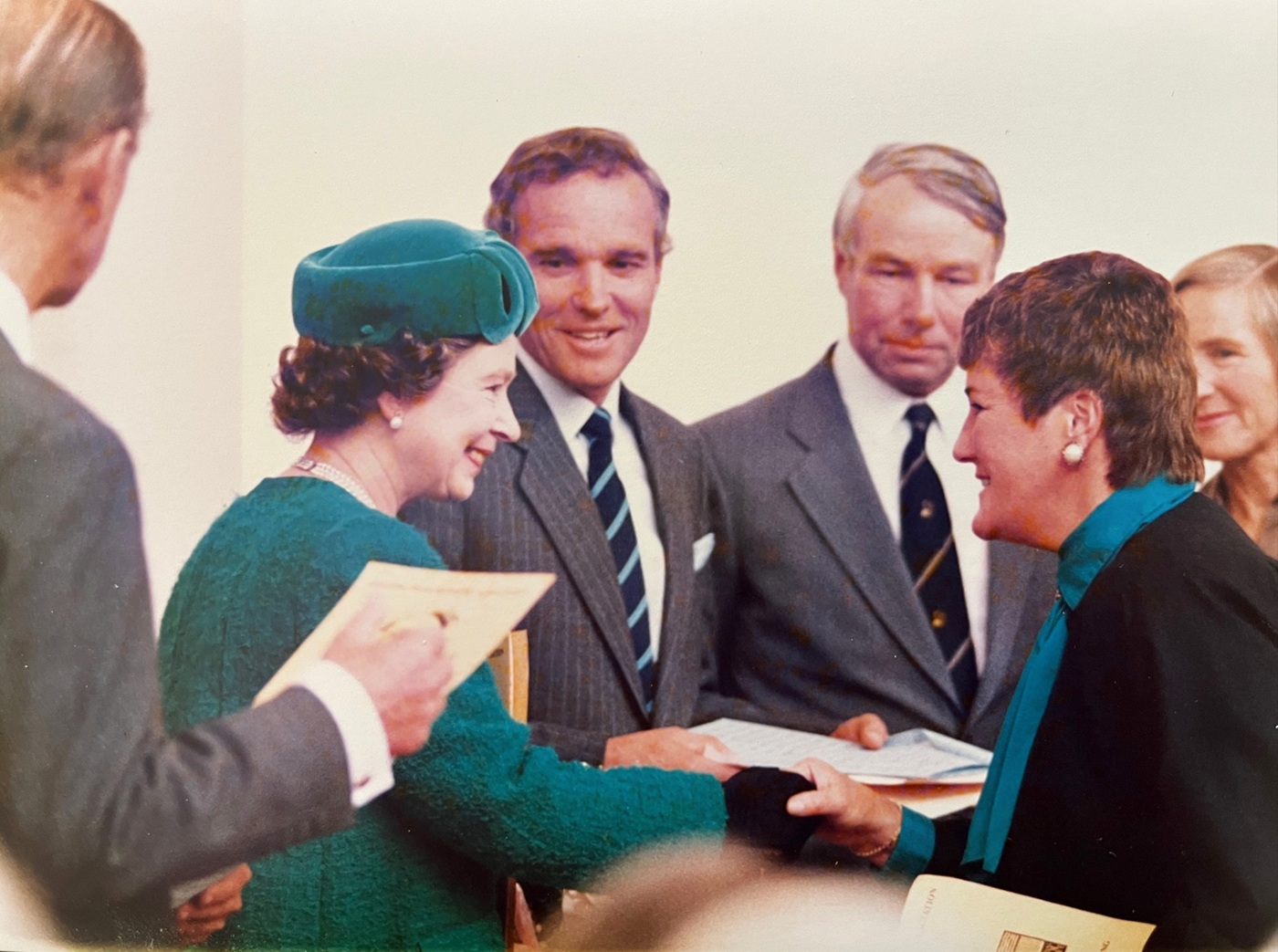
1988 Graeme Turner introducing, Her Majesty Queen Elizabeth II, to wife Nerida Turner.
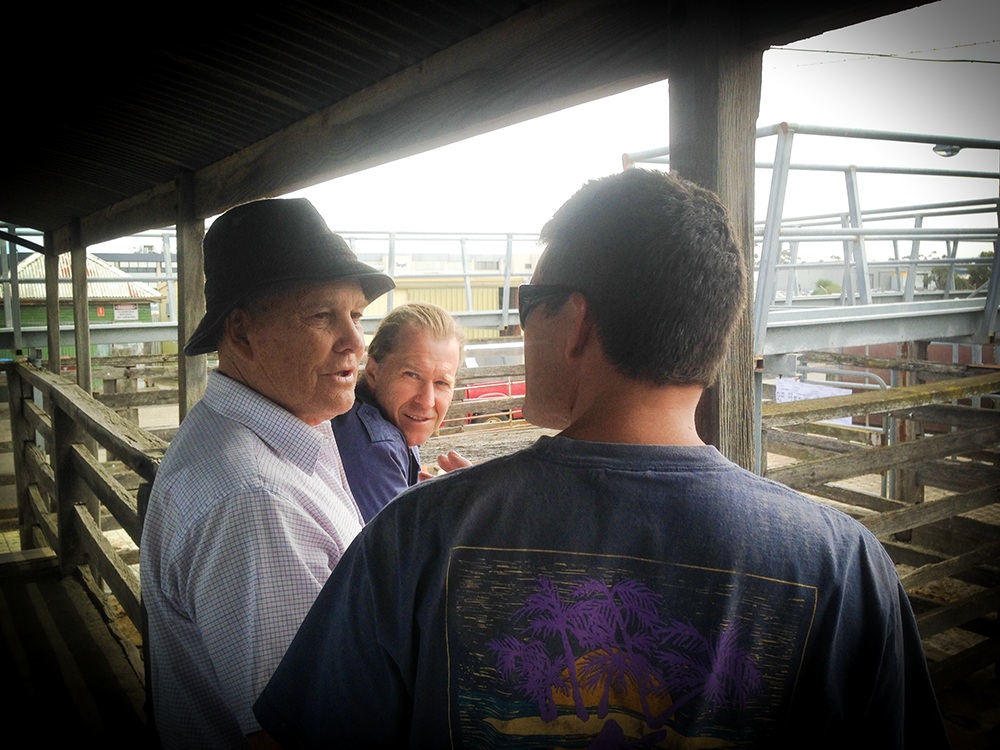
2014 Graeme Turner discussing Angus cattle sale with sons.
year : 1982 to today
Dawn broke anew on Stretton Park in 1982 when Graeme Milton and Nerida Lois Turner, purchased its acres at auction, in a period of drought it was a bold purchase at the time, and the family negotiated the acquisition of several Stretton titles after auction, including the main farm buildings, house and facilities at the time.
Graeme Turner rose to prominence in the wool industry later creating and serving as Managing Director of Arcadian Wool Brokers, Australia’s largest Independent Wool Broking firm. His many farm holdings wool brands, and later cattle sales, often achieved record sales. Graeme was a well-known contributor to the region, president of the Australian Wool Growers Association, a great sportsman, a champion billiards player at The Geelong Club. The current Turner family reflect back on a day whereby Graeme was selected to tour the Queen Elizabeth II HR through the opening of the Australian Wool Museum in Geelong.
Nerida Turner has worked as an education in the rural industry and created many rural education programs, an ever present support on sale days or at shearing time, Nerida ran Stretton Park with farm management assistance after Graeme’s passing in the later years. Today the sons manage the property.
The Turner family’s 40-year vigil a vow to the land’s lore. Today, as 2025 unfolds, Stretton endures under the Turner families gaze – the farm moves forward with purpose, inspiring the next phase of this iconic farms journey.
Graeme Turner rose to prominence in the wool industry later creating and serving as Managing Director of Arcadian Wool Brokers, Australia’s largest Independent Wool Broking firm. His many farm holdings wool brands, and later cattle sales, often achieved record sales. Graeme was a well-known contributor to the region, president of the Australian Wool Growers Association, a great sportsman, a champion billiards player at The Geelong Club. The current Turner family reflect back on a day whereby Graeme was selected to tour the Queen Elizabeth II HR through the opening of the Australian Wool Museum in Geelong.
Nerida Turner has worked as an education in the rural industry and created many rural education programs, an ever present support on sale days or at shearing time, Nerida ran Stretton Park with farm management assistance after Graeme’s passing in the later years. Today the sons manage the property.
The Turner family’s 40-year vigil a vow to the land’s lore. Today, as 2025 unfolds, Stretton endures under the Turner families gaze – the farm moves forward with purpose, inspiring the next phase of this iconic farms journey.

